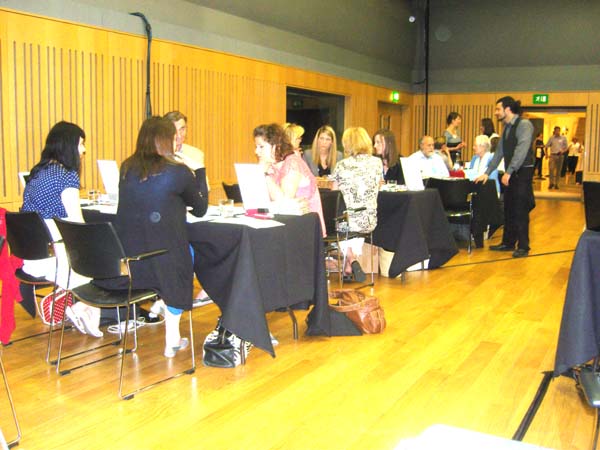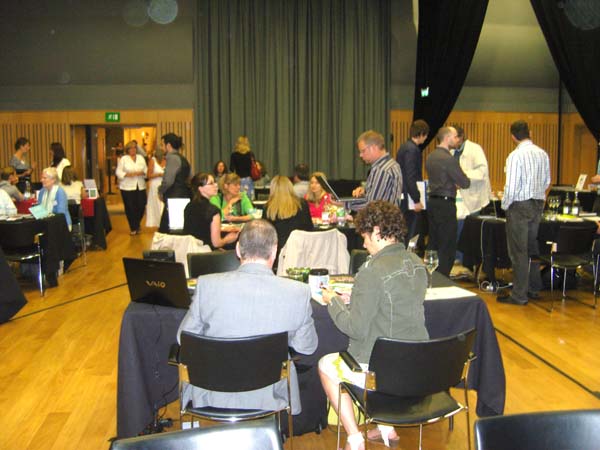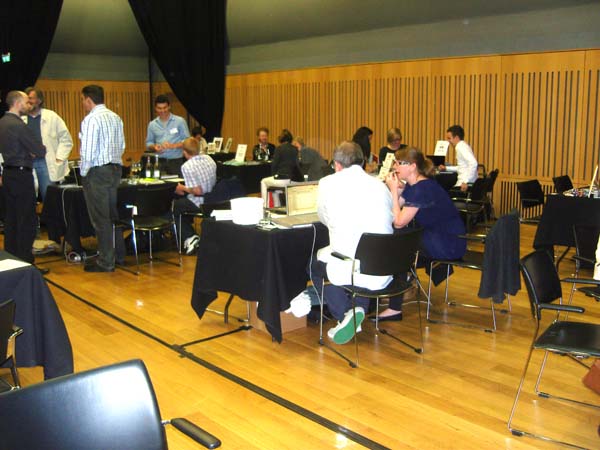Martin Scorsese and fotoLibra
November 15th, 2011by Gwyn Headley
Managing Director
Unlikely partners? Not really.
A Google search on Martin Scorsese (a name his parents made up) returns 15,600,000 results.
A Google search on fotoLibra (a name I made up) returns 1,760,000 results.
So we’ve got a way to go yet. But we’ve only been going since 2004, and he’s been around since 1942 (happy birthday for Thursday, Martin).
I’ve just watched Scorsese’s documentary Living In The Material World about George Harrison, and there, buried in the credits at the end (you had to have very sharp eyes), is the acknowledgment line “Denis O’Dell / fotoLibra”.
It’s not much, but it’s a credit in a Scorsese movie. They paid well for the picture usage, too. Congratulations, Denis!
And I can’t keep the grin off my face.
Heritage Ebooks — the first fortnight
November 8th, 2011by Gwyn Headley
Managing Director
Heritage Ebooks, for those who don’t know, is the digital publishing arm of VisConPro Ltd, the holding company of fotoLibra. So we’re sister companies: same owners, same shareholders, same staff.
We set up Heritage Ebooks to demonstrate the advanceImages system for supplying images to ebook publishers, and it’s already taken on a life of its own. I will be blogging extensively about advanceImages next month.
Heritage Ebooks’ first 40 titles are the Follies of England series, over a quarter of a million words written by me and Dutch art historian Wim Meulenkamp, and with a large percentage of the 1,900+ photographs taken by fotoLibra members. You can see our first titles here at heritage.co.uk — click on VIEW ALL TITLES.
Although we’re not awash with critical acclaim — nobody has yet reviewed a single title — there has been media interest. I was on BBC Radio 4′s flagship programme Today on Monday 31 October, talking about follies.
Today the Daily Mail ran a good, big feature on the amazing follies of Whitaker Wright, with a credit to Heritage Ebooks at the end. You can read it here.
All this, as our PR says, is grist to the mill. fotoLibra members are being paid a royalty on the sale of these books, so the more books we sell, the more they will earn. And ebooks never go out of print. So the money will keep coming in. More publicity means more sales. To date we’ve sold 99. Harry Potter this isn’t.
But it’s a start.
The Cost of Complacency
September 26th, 2011by Gwyn Headley
Managing Director
There was an interesting blog posting by Paoga’s Graham Sadd recently on the perils of ignoring cyber crime.
For the last four weeks someone based in China has been registering as a buyer on fotoLibra.com.
Not once, but approximately every four minutes throughout the Chinese working day. It seems like a manual attack rather than an automated one, because although the fake addresses are all the same — Cherry Street Room 318 Atlanta Georgia USA 30332, which I think might be a lie — there are occasional spelling mistakes. It’s easy for us to block the attacks. But despite failing every time, they continue to trundle in every four or five minutes.
We hope we’re not complacent about online security. We do what we can to protect ourselves against such attacks, but what we can’t get our heads round is what can they hope to achieve through multiple registrations as a picture buyer on a picture library site?
At the very least they ought to try and buy a picture from us.
Coals to Newcastle
August 17th, 2011by Gwyn Headley
Managing Director
We don’t normally comment on sales we make at fotoLibra, but here’s one that caught my eye: we’ve just sold a photograph of the Eiffel Tower to … a Parisian fashion house.
Result!
Update — half an hour later — we’ve just sold a photograph of a Mauritian helicopter to a communications company in … Mauritius.
I love this.
Picture Sales & Website Traffic
May 24th, 2011by Gwyn Headley
Managing Director
Over the past year we’ve been working hard to build our website traffic on the simple belief that more visitors = more sales.
And it seems to be working. In the first three weeks of May we’ve sold images to seven different countries, all to new customers who have bought straight off our site. A very warm welcome to you all!
They’re not just small sales either. One was for over £400 / $635 / €458, and three others were in three figures. This is remarkably good, given the present state of the picture stock market, and as a result some of our photographers will be getting a pleasant surprise in a few days time.
We can’t help feeling this must have something to do with increased traffic to the fotoLibra website. On the Web ranking site Alexa.com, fotoLibra stands as the fourth most visited general picture library in the UK.
If this doesn’t sound great to you, remember there are over 450 picture libraries in Britain.
fotoLibra.com now ranks as the 110,000th most visited website in the world. Laughably low, I know, but just go to Alexa.com and input the URL of any small business you know. Then compare it with the fotoLibra ranking.
Surprising, isn’t it?
If you are a photographer, it makes commercial sense to post your images where more people will see them. And if a photograph is one of 500K, it will have more chance of being seen than if it’s one of twenty-five million.
I forgot to tell you about my last blog, Be Careful With Google Image Search, so here’s a link to it.
And if you wonder why we sometimes seem stressed and spaced-out, read my latest personal blog!
By the way, if you contacted anyone at fotoLibra in the last 10 days and haven’t heard anything back, please contact us again as we’ve been having an intermittent email problem which we hope is now sorted.
Be Careful With Google Image Search
May 13th, 2011Cybercrooks are exploiting security flaws in Google Image Search to try to frighten people into buying evil software.
If you’ve ever seen a flashing banner saying something like “CAUTION — YOUR COMPUTER IS AT RISK” then you are a click away from being led down the path of perdition.
According to the SANS Internet Storm Center (always worth checking when a friend sends you another shouty email telling you yet again that some new bug has been classified by Microsoft as the most destructive virus ever) the villains have “compromised an unknown number of sites with malicious scripts that create Web pages filled with the top search terms from Google Trends.”
Click on an image, and there’s a possibility you’ll be routed to a page offering unverified anti-virus “scareware”, complete with misleading security alerts and warnings.
As far as we can tell, if you simply ignore the ads no harm will ensue. But of course we’re not experts, so we can’t be sure. Keep calm and shut your browser down. You can restart it straight away.
Apparently there are more than 5,000 hacked sites, injected on average with about 1,000 of these bogus pages. This means Google Images is referring about 15 million searches a month to these scam merchants — a mere drop in Google’s ocean, of course, but still a significant number.
There are free plug-ins available which will enable your browser to detect such evildoing. Check out Noscript for Firefox, and a chap called Denis Sinegubko is developing another Firefox plug-in that will flag malicious Google Image search results by placing a red box around images that appear to link to hostile sites, but I don’t think it’s ready yet.
Thanks to Netapplications.com for alerting me to this.
fotoFringe
May 12th, 2011by Gwyn Headley
Managing Director
There was no BAPLA Picture Buyers’ Fair this year. The lovely and redoubtable Flora Smith of Topfoto decided to do something about it.
With the help of Will Carleton of Photo Archive News she created fotoFringe. 55 picture libraries (curiously no Getty, Corbis or Alamy) piled into the plush King’s Place development on a highly gentrified canal basin at King’s Cross and prepared to tout their wares to the picture editors and researchers they hoped would attend.
And attend they did. I can’t speak for other picture libraries, but at the show yesterday we had 58 — count them, 58 — fruitful meetings. (We would have had more had not at least three photographers managed to evade the armed guards and got to chew the fat over a leisurely few hours with us while we agonisingly watched trains of real live picture buyers, weighed down with credit cards and price agreements burning holes in their handbags, steaming past us. There’s a time and a place etc etc and You Know Who You Are. No — we love you really. It’s just that we went there geared up to talk to picture buyers, not sellers.)
I can speak for other picture libraries, actually. There wasn’t a single voice of dissent. Everyone had a great day. It wasn’t expensive (except for all the bars of chocolate we handed out to picture buyers) and in terms of cost per head per meeting it was perhaps the most successful expo fotoLibra has ever attended.
Let’s do it again!
One interesting point (to me) is that 14 of our visitors had come to a trade show without bringing any business cards with them. Is it just me, or does that seem odd?
If you want to see more (and considerably better) images and read more about fotoFringe, here’s a link to Photo Archive News’s report for May 12. You can see fotoLibra’s stand and Yvonne’s and my cheery faces in the fourth image down.
Meanwhile my only quibble was that as we were in the second wave of bookings for the show along with 18 other picture libraries, our black felt-covered fotoLibra trestle table was placed below water level in the windowless basement. It was interesting to note people’s reactions to the space: the under 25s said “This looks like an exam room;” the 25 to 60s said “This looks like a gymnasium;” and the over 60s said “This looks like a morgue.” Ah, the preoccupations of age.
Here’s the stand when we set it up:

and here’s the rest of the room (or The Morgue, as my age group called it).



It really was a cheerful, positive, feelgood sort of event. Let’s hope this leads to more sales for us all.
Half A Million Images
March 14th, 2011by Gwyn Headley
Managing Director
First thing I do every morning is check the fotoLibra website to make sure it’s up and running.
Over this weekend I confess I’ve only shot a cursory glance at it because I have been immersed in rugby, exulting over Italy’s first 6 Nations victory over mighty France, delighting in Wales’s rule-breaking defeat of Ireland and secretly but vainly hoping Scotland might derail England’s remorseless progress to the Grand Slam.
So on a beery back-to-work morning I powered up my (now obsolete) MacBook Pro and went through the site. I checked the Home Page.
And double checked again.
We’ve gone past the half million mark. We have over half a million images on fotoLibra.
WOW!!
When fotoLibra was just a glint in my eye in 2002, I took Anne-Marie Ehrlich, the doyenne of picture researchers, to lunch. She said one couldn’t really take a picture library seriously until it had about 25,000 images. “No problem,” I scoffed, “we’ll have that many in five years, easy.”
And now here we are. We’re not the biggest picture library in the world — there’s the microstock rabble, and of course Getty, Corbis and Alamy (which has about 40 times as many images as we have) but I think we can say we’re now big enough to count. And our images are the images of fotoLibra members, not compilations of portals of images like the three I’ve just mentioned. With the largest image libraries, the same picture may appear from three or four different sources. I can’t say that never happens with fotoLibra, but you are more likely to find a unique image on fotoLibra than with most other image collections.
If you look at the rankings table in my last blog, you’ll notice that out of twenty leading picture libraries exhibiting at fotoFringe, fotoLibra has many more site visitors than any of the others — excluding the two celebrity stock agencies, because we don’t do slebs.
When I had the fotoLibra concept, I was forced to go ahead with it on the grounds that if I didn’t do it, someone else would. And I would have been kicking myself for the rest of my life. “I could’ve been a contender,” I would have been muttering thickly into my beard.
Well, now we’re contenders. Please raise a glass!
fotoFringe, May 11
March 11th, 2011by Gwyn Headley
Managing Director
Tags: 4 Corners, Alamy, Arcaid, Arenapal, BAPLA, Bridgeman, Camera Press, Corbis, Country Life, fotoFringe, fotoLibra, Getty, Heritage Images, Image Source, John Walmsley Education, marketing photographs, Mary Evans, Mirrorpix, Nature Picture Library, Photo Archive News, photography, Photoshot, picture library, Picture Research Association, picture sales, Robert Harding, Ronald Grant Archive, selling photographs, Specialist Stock, Splash, stock agency, Topfoto, View, WENN, Writer Pictures
When fotoLibra was just an ickle bitty new picture library we scraped all our pennies together and took a stand at the BAPLA Picture Buyers’ Fair. We thought it crucial that we should hang out our faces in public, and meet all those radiant people who would (we were convinced) shortly be buying shedloads of photographs from our wonderful members.
It hasn’t quite worked out like that, although we haven’t done too badly. We’re nearing half a million images online, which although it doesn’t yet match the behemoths of Getty, Alamy, Corbis and the microstock rabble, is still a respectable amount of superb images.
So it was with sadness that we learned that BAPLA would not be holding a Picture Buyers’ Fair this year.
Full marks therefore to the lovely Flora Smith of Topfoto who reasoned “If they’re not going to do it, then we will”. She hired a room and some trestle tables, called the event fotoFringe and invited a few friendly picture libraries to exhibit with her. “What a great idea,” I thought, and emailed Flora to say “Count us in!”
No room.
It was by invitation only, and she’d filled it already. 21 picture libraries, plus media partner Photo Archive News, will be exhibiting at fotoFringe — but not fotoLibra. We’re on the waiting list for a table, but we’re not holding our breath. Of course we’ll be there in person(s) (Flora said we could come), prowling round the room like hyenas and jackals, but we won’t be sitting at the top table.
Sleepless nights haven’t resolved the question of why Flora and Will Carleton of Photo Archive News didn’t think of us when choosing 20 picture libraries to exhibit with them (is it my tendency to dribble? my flatulence? my general nastiness?) but there we go. We will just sit on the sidelines and wait.
fotoLibra strongly supports the idea of fotoFringe, and hopes that every picture researcher worth her salt will attend, despite the formal absence of fotoLibra, Getty, Alamy and Corbis. There’s a website for the event at http://www.fotofringelondon.com, and it takes place on May 11th at the spiffy new Kings Place venue just north of King’s Cross. See you there!
One thing the fotoFringe website doesn’t do is link through to the exhibiting agencies’ websites so you can see what they offer, so as a service to picture buyers I thought fotoLibra could contribute that here.
And rather than list the libraries conventionally in alphabetical order, I’ve listed them in the order they appear on Alexa, the website ranking index standard, to see how close they get to Google, Facebook and Youtube. The lower the number, the more people visit the site.
Although fotoLibra isn’t exhibiting at fotoFringe, it would be invidious to leave my own company out of any listing. So here we go:
| LIBRARY | SPECIALISM | TRAFFIC RANKING |
| Wenn | Celebrities | 44,438 |
| Splash | Celebrities | 90,218 |
| fotoLibra | General | 149,195 |
| Image Source | General | 307,297 |
| Bridgeman | Art | 312,278 |
| Heritage Images | Heritage | 367,724 |
| Photoshot | General | 386,375 |
| Topfoto | General | 442,985 |
| Robert Harding | Travel | 581,251 |
| Photo Archive News | Trade News | 824,236 |
| Nature Picture Library | Nature | 940,390 |
| View | Architecture | 1,179,000 |
| Camera Press | General | 1,904,000 |
| Picture Research Association | Industry Body | 2,080,000 |
| Mary Evans | History | 2,138,000 |
| Arcaid | Architecture | 2,216,000 |
| Mirrorpix | News | 2,424,000 |
| Country Life | Heritage | 2,667,000 |
| 4 Corners | Travel | 3,590,000 |
| Specialist Stock | Environment | 7,590,000 |
| Ronald Grant Archive | Cinema | 8,012,000 |
| Arenapal | Performing Arts | 9,170,000 |
| John Walmsley Education | Education | 22,800,000 |
| Writer Pictures | Authors | no data |


